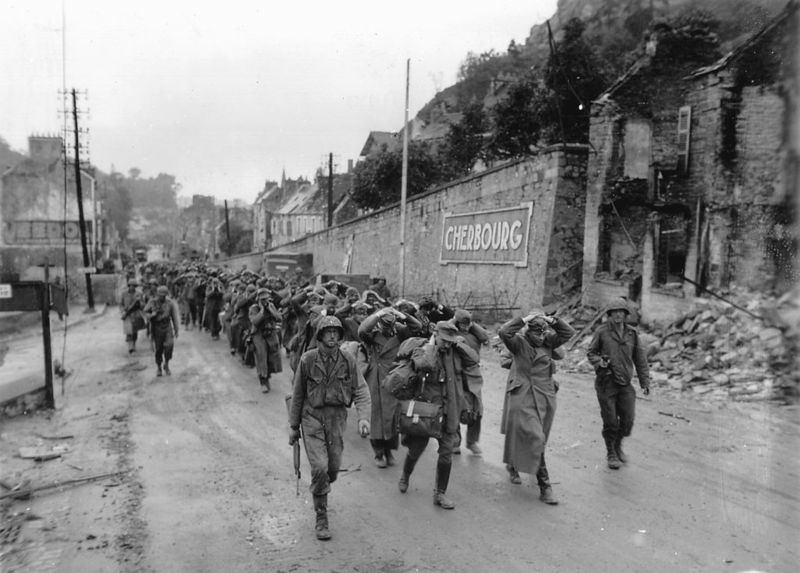The Battle of Cherbourg was fought directly after the Allied landings on the beaches of Normandy on June 6, 1944, otherwise known as D-Day. The battle raged on until the end of the month on June 30, as American and British troops sought to capture a fortified port at Cherbourg that was crucial to their European campaign. If they managed to secure the deep-water port, the Allies would be able to bring in reinforcements straight from the United States, rather than having to make several inefficient stops along the way to France. Therefore, during the planning of the landings at Normandy, it was ensured that the position of the incoming troops would enable them to capture Cherbourg effectively.
Early in the morning of June 6, paratroopers landed in scattered patterns on the Cotentin Peninsula. Located at the center of the peninsula’s northern tip was the Cherbourg port. The paratroopers, despite landing spread out from each other, managed to secure the routes from which the troops landing on Utah Beach would use to make their way to Cherbourg. At dawn, the U.S. 4th Infantry Division landed on Utah Beach, suffering minimal casualties. Their next move was to meet up with other landing divisions to the east. Meanwhile, the paratroopers who landed on the peninsula moved through the Douve River Valley near Cherbourg and engaged in bloody fighting at the Battle of Carenta. After the paratroopers successfully captured Carenta, the Allies established a continuous front against the Germans, putting them in a good position to keep pushing onward.
On June 18, U.S. troops reached the west coast of the Cotentin Peninsula, blocking off the German garrison from being able to bring in reinforcements. Several other divisions of American forces began moving northward towards Cherbourg and were soon in striking distance of the port. The German garrison at Cherbourg, in contrast, was weak and disorganized. They were short on food and munitions, most of the soldiers were from labor units, and the others were inexperienced in fighting. The German commander thus decided the best course of action would be to destroy the port, so it could be of no use to the Allies.
The assault on Cherbourg began on June 22, as the Americans slowly worked their way through tough German defenses while Allied ships bombarded German fortifications. On June 26, an elite British force known as the No. 30 commando launched an attack in a southwest suburb of Cherbourg, capturing the Kriegsmarine (German navy) intelligence base along with all of the soldiers and officers occupying it. At the same time, troops captured Fort du Roule, the most strategically important location in Cherbourg. As Fort du Roule was the command center for the city and all of its defenses, the capture effectively ended the battle. German officers were still not willing to surrender, however, until they were tricked by Allied officers who convinced them that the Allies had more manpower and munitions than they actually did. The Germans finally surrendered the peninsula on June 29.
Despite the Allied success in taking Cherbourg, the Germans were successful in their demolition of the port. The port was not able to be put into use until the middle of August; however, some ships managed to use the harbor late in July. The defeat was still a significant blow to the Germans, as they had been embarrassed by the Allies’ ability to hand them a harsh loss. The city of Cherbourg was officially liberated, and the same fate awaited the rest of France when Paris was liberated on August 25, 1944.
Suggested Reading:
Army History: Utah Beach to Cherbourg
Steven Zaloga, Cherbourg 1944: The First Allied Victory in Normandy (Bloomsbury, 2015)








